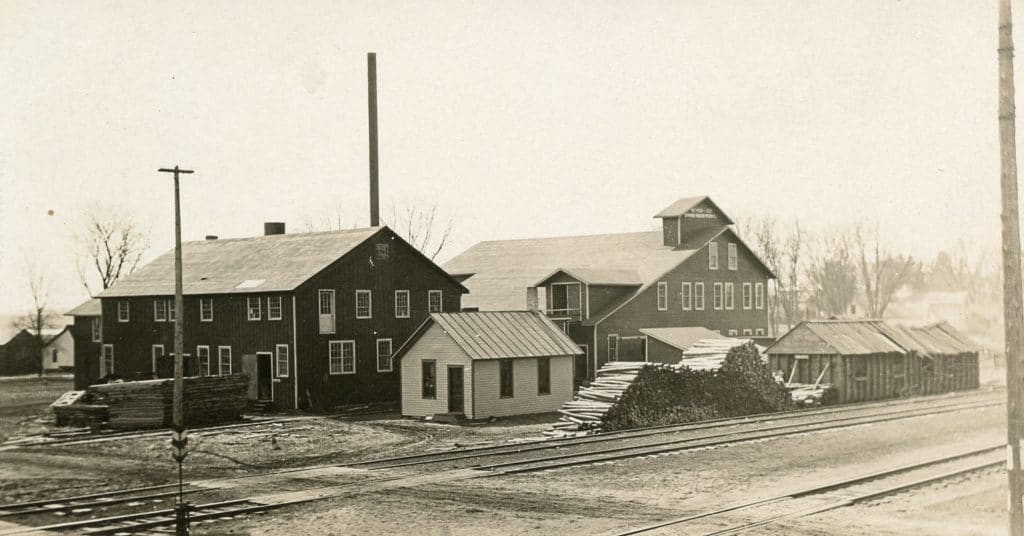
By Carol Cartwright, Whitewater Historical Society
Today’s COVID-19 pandemic has brought some food supply questions as food processing plants have become hotspots for the virus. A question was raised as to what happened with the food supply during the last pandemic in 1918 in Whitewater. The only disruption in food supplies came from rationing brought about by World War I. This involved primarily wheat flour and sugar. No other shortages in food supplies were reported.
The main difference between Wisconsin in 1918 and Wisconsin in 2020 is that the food supply chain then was primarily local, as local as your own home garden to the much higher number of small food processing plants that provided canned and other processed goods that needed only to be transported short distances.
In Walworth County, twice the population lived on farms than lived in towns. Dairying was the most important type of farming at the time and farmers’ milk was processed primarily at small, local, creameries and cheese factories or at the relatively new McNeill, Libby & McNeill condensery (later the Hawthorn-Mellody milk plant) in Whitewater.
Many, if not most, farm families grew most of their own food. There were cattle, of course, for beef, and many farmers grew pigs for home use or to sell. Most farms had chickens that provided both eggs and meat. Surplus eggs were often traded in town for the few supplies farmers did not grow themselves. Egg production was often the sphere of farm women who took any profits as income to use as they pleased.
Most farm women were also responsible for growing vegetables in a large garden. Many older people today had relatives on family farms in Wisconsin and can remember their large gardens. Many Wisconsin farmers also grew extra food crops like potatoes or cabbage to sell locally. Women canned or stored large amounts of vegetables including making their own pickles and sauerkraut.
Even in town, where most people relied on local grocery stores for their food, it was very common for families to have home gardens or to be able to purchase local produce from grocers. Many women in town also canned and preserved food they acquired locally.
In the early 20th century, Wisconsin had a robust local meat and vegetable processing industry. Milwaukee was a center for large meat processing, but across the state, there were many regional processing plants, particularly in the area of pork processing. This changed after World War II. For example, in Milwaukee, 3,750,000 cattle and 4,500,000 pigs were processed in 1946. In 1978, only 165,000 cattle and 49,000 hogs were processed in Milwaukee.
In the early 20th century, canning factories were built across the state to process the large numbers of vegetable crops grown by Wisconsin farmers. By 1920, there were 126 canning factories in Wisconsin, including the Whitewater Canning Company, established in 1914. Peas, green beans, corn, and cabbage were all popular crops canned in Wisconsin in small plants.
In the late 20th century, most small town canning factories and meat processors closed as the food processing industry consolidated.
The main disruption to the food chain during the 1918 pandemic was World War I-related. Wheat flour and sugar was strictly rationed and people were urged to use meat sparingly, but all other foods were plentiful. The federal government also encouraged people to develop “war gardens,” and there were several references in the Whitewater Register of people doing just that.
When the 1918 flu pandemic hit Whitewater, there may have been shortages of flour and sugar due to the war, but fresh vegetables and other produce was not affected due to the largely local food production chain in the state.
— Our thanks to local historian Carol Cartwright, President of the Whitewater Historical Society, for this additional report on the local impact of the 1918 Influenza Pandemic.





















